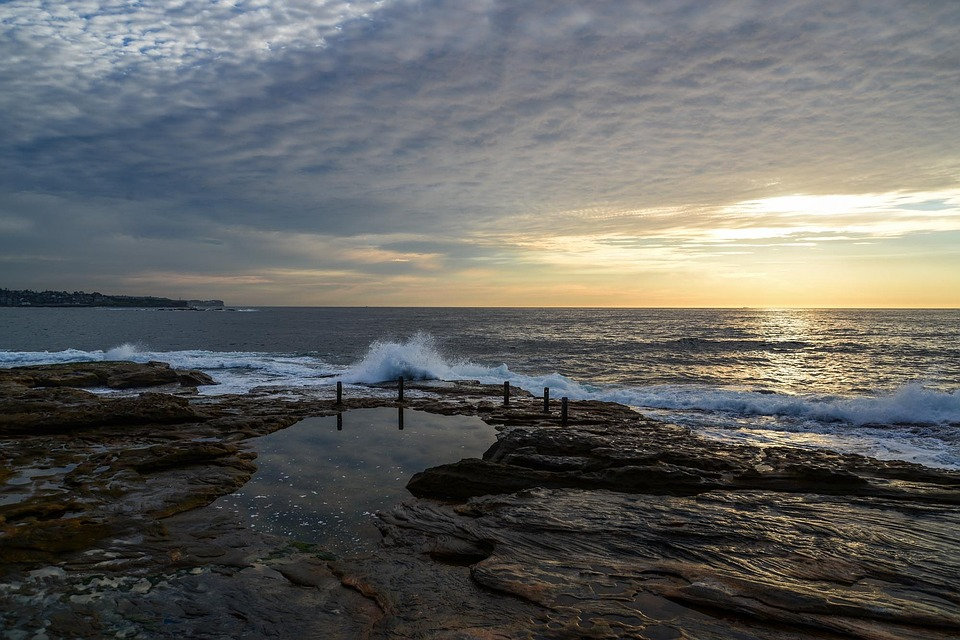
Sydney’s coastline is some of the most rugged in Australia, and it offers numerous lure fishing spots for boating and land-based anglers alike. The iconic sandstone cliffs and headlands from Barrenjoey Headland in the north to the Royal National Park in the south abound with spots to throw lures for a vast range of fish species. In this article we’ll cover some of the top coastal fishing spots around Sydney, both land based rock ledges and boat-based within a kilometre of the shoreline.
Sydney’s Best Rock Fishing Spots
First: Safety!
All of the rock fishing spots described in this article are exposed to ocean swells and can be dangerous. Rock fishing is the second most common activity resulting in drownings, with 8 people on average being drowned each year whilst fishing. It is advisable to fish in the company of others whenever you visit these spots. The wearing of life jackets is mandatory on these rock platforms under NSW law, so be sure to wear one at all times and also to wear sturdy footwear that has rock cleats fitted. Quality polarised sunglasses that don’t distort your vision are incredibly important for cutting glare and enabling you to see where you are putting your feet.
Much has been written about safety when rock fishing, so I won’t repeat it all here, but simply direct you to this page on the NSW Government site. If you are at all uncertain about setting foot on a ledge, DON’T. No fish is worth losing your life.
Lure Fishing Putty Beach: Conquering The Headlands
Nestled on the stunning Central Coast of New South Wales, Putty Beach offers anglers the perfect blend of rocky headlands and pristine coastline with a myriad of fish species to target. The distinct rocky headlands at each end provide an angler’s playground with bream, Australian salmon, tailor and kingfish among the prime candidates to through lures at, although bonito, snapper and mulloway are also on the cards. This is a year -round rock fishing spot, provided conditions are safe to do so.
The warmer months from November to April are the prime months for bream, kingfish and snapper fishing. Small soft plastic grubs are effective on bream, as are small hard bodied lures, particularly deep divers bumped across the rocky ledges at high tide. You’ll find a great description of how to do this effectively in my interview with Kris Hickson on central coast headland bream. Kingfish are mostly taken on high speed metal lures worked around the washes, although surface poppers and stickbaits can also be effective when worked through these areas. Bonito will often turn up at these times too, and can be effectively targeted by switching to lighter gear and small metal slugs – check out my interview with Mark for details on land-based bonito fishing. For snapper (and the above mentioned species), shore-based slow pitch jigging is a great option.
The cooler months are the prime time to chase tailor, salmon and the highly-prized mulloway. Tailor and salmon can be caught by working metal jigs, poppers and stickbaits around the washes, with early morning being prime-time. Putty Beach is famous as a fishing spot where land-based mulloway can be taken during flood periods. Traditionally this was done using large feather jigs, but hard bodied lures and large soft plastics have become the weapons of choice in more recent years. Tristan Sloan’s podcast episode was about Ballina headland jewfish and Shea Coopers episode was about Coffs headland jewfish, but the techniques and tackle are the same when fishing Putty Beach.
Avoca Rocks: Primo Land-based Sport Fishing
Avoca, with its rugged coastline, flat ledges and access to numerous fish species is an exhilarating lure fishing spot. As is often the case, the best rock fishing platforms are a bit of a hike from the carpark, but well worth the effort. As a fishing spot, Avoca Rocks has a well deserved reputation for connecting lure fishers with bread and butter species like bream, flathead and whiting, right through to large, strong pelagics like kingfish and strong demersals like snapper, mulloway and even blue groper.
During the spring months the water starts to warm up, which sparks a fair bit of kingfish activity. Early mornings spent tossing high speed metal jigs or a range of poppers and stickbaits will often pay off with a bag of kingies with the occasional bonito, salmon or tailor thrown in. The pelagic action continues into the summer, when dropping a soft plastic or slow jig down deeper can often result in a catch of snapper. Blue groper, whilst usually targeted on bait, can also be caught on lures. Those keen to give this a go might like to listen to my interview with Gideon Mettam, who targets groper on soft plastics along the Albany coastline – plenty of tips there that also apply to Sydney fishing spots.
Winter fishing from the ledges at Avoca will produce quality tailor and Australian salmon for those tossing metal lures or topwater offerings. Bream can be taken from the rocks around the corners of the beach and respond well to small soft plastics and deep diving hard bodies.
Bluefish Point: Sydney’s North Head Rock Fishing Spot
Bluefish Point, the exposed rock outcrop on Sydney’s North Head, is lure fishing hotpot requiring special mention – and special care.. From dawn till dusk, the rocky shores hold the promise of encounters with various species that thrive in these coastal waters. This area produces both quality pelagic and demersal species in good numbers but can be dangerous and should be treated with respect.
Bluefish Point is renowned for its kingfish population, especially during the warmer months from spring to autumn. You’ll need to pull out the heavy gear at this spot and work high speed metal jigs, diving lures, poppers and stickbaits to attract the kings. Early morning is the prime time to be on the ledges for kingfish, but they can be caught through the day, especially if conditions are overcast. Other pelagic species also turn up at these times, especially samsonfish, bonito and Australian salmon. Occasionally, a longtail or mack tuna, cobia or even yellowfin tuna will be hooked from these ledges, so go prepared for anything.
The kingfish, bonito, tuna and northern species tend to move on during the cooler months. Samson fish and salmon are at Bluefish Point all year around and are joined by some horse tailor, along with a few silver trevally.
For those interested in demersal species, snapper make a good showing at Bluefish Point during the spring to autumn months, whilst the odd jewfish will show up during the winter months, usually following the schools of tailor. Soft plastics are effective on snapper and jewfish if you can get them past the tailor, but often high speed metal jigs or slow pitch jigs are more effective. Check out how to use slow pitch jigs shore-based.
Garie Beach: Royal National Park Fishing Treasure
Garie Beach is nestled within the Royal National Park of New South Wales and has excellent rock fishing headlands to both the north and south of the car park. The rock ledges are low to the water and must be treated with caution, swells can easily catch an unwary angler. Australian salmon, tailor, kingfish, mulloway, trevally and bream are the main targets, but bonito, snapper and various tunas can also turn up and make things interesting at times.
If you’re fishing the Garie’s rocky points during the summer months it’s worth throwing metals into the suds or working poppers and stickbaits around the wash for salmon and kingfish. Early mornings fish best, especially on a tide change. This is also the time when you’re most likely to encounter bonito, cobia, snapper and trevally.
As the water cools into late autumn and winter the salmon and trevally will thin out but still be available, whilst kingfish and tunas will head north and disappear. This is the time to fish for tailor and jewfish, both of which move into the washy areas that contain boulders and bommies – and baitfish.
Bream can be caught from Garie’s headlands all year around and as usual will take small soft plastics, particularly curly tails and soft prawns. Deep diving hard bodies bumped across the cracks and crevices can also be very effective.
Bare Island And Brown Rock: Southern Sydney’s Finest Rock Fishing Spots?
Land-based lure fishers seeking rock fishing spots on Sydney’s southern coast will find it hard to go past Bare Island and Brown Rock at La Perouse. Situated just inside the entrance to Botany Bay, Brown Rock and the eastern shoreline of Bare Island are exposed to the ocean swells and must be treated with respect. However, if the weather get’s too rough there is always the option of fishing the sheltered lee side of the island.
The ocean rocks at these locations are popular fishing spots for tailor, bonito and kingfish during the winter months, with kingfish, salmon and trevally available during the warmer months. For all of these species the most popular and successful lures tend to be metal jigs in the 30-150g weight range. Poppers, stickbaits and soft plastics can work well too, although the latter tend to get chewed up pretty quickly if there are a few tailor around.
Using soft plastics or slow jigs and allowing them to sink close to bottom is a great way to connect with the snapper and mulloway that also frequent these areas as they follow schools of bait. Squid make a strong appearance here during the summer months but are available all year round.
If the ocean ledges are unsafe for fishing it’s definitely worth fishing on the lee side of the island, when bream, flathead, whiting and squid are the normal catch. Small paddle tail grubs, metal blades, hard bodies, soft plastic prawns and stickbaits are all effective at times.
Relevant Podcast Episodes
Boat Fishing Along Sydneys Expansive And Rugged Coastline
Taking to the water to boat fish within a kilometre or so of the Sydney coastline can be an exhilarating. It also requires a good deal of care to keep yourself and your vessel safe when dealing with ocean swells, wind, shallow bommies and rugged rocky shorelines and reefs. Needless to say a reliable, seaworthy boat with the right safety gear and an experienced skipper is vital. If you’re unsure or the swell is too big, stay further out and away from the rocks, it’s not always necessary to be tight against the rocks to catch fish. Or, fish the sheltered water inside a harbour or inlet. Ans if fishing in close there should always be a non-fisher at the helm watching the sea and keeping the boat safe.
All of Sydney’s rock fishing spots listed above can be fished from a boat. However, land-based anglers have limited choices of fishing spots, so common sense and courtesy would suggest staying well clear of the popular ledges and platforms. Boating anglers have the pick of shorelines that are inaccessible from the shore, plus reefs, rubble patches, bommies and other structures further out that can’t be accessed from land. The key species available to boat-based anglers are essentially the same as those targeted from the shore, although some additional techniques can be employed from a boat.
Fishing For Pelagics
Pelagic species are popular targets for the boat-based angler, with kingfish being among the most highly prized species. They’re a year-round option, as are samsonfish, salmon, tailor and trevally. That said, kingsfish and salmon tend to be more active through the summer months, while tailor and trevally fish better during winter. During the summer months it’s possible to tangle with bonito and other small tunas, such as longtail. Occasionally in summer you might find cobia, mackerel and even billfish feeding in the inshore zone. The techniques used from the shore are also popular and effective from boats, namely casting and retrieving high speed metal jigs or working poppers, stickbaits and hard bodies around the wash zone.
Fishing from a boat also allows anglers to sneak quietly up on bust-ups, so keep an eye out for working birds and move gently within casting range, putting your lure in front of the direction the fish are moving, rather than right into the school. Once again, metal jigs, poppers, stickbaits, hard bodies and soft plastics can work, depending on the circumstances. Trolling around washes or areas where a bustups can also be effective, deep diving hard bodies are the best option for this.
Vertical jigging, both speed jigging and slow pitch, can be deadly on many of these species, as can the use of soft vibes dropped to the bottom and teabagged over rubbly areas. The latter is best left for areas that are reasonably clear of snags, or the cost of lost lures can quickly add up.
Fishing For Demersals
Demersal species such as snapper and mulloway respond well to butterfly style jigs, octo jigs, soft plastic lures and even hard bodies worked around the edges of reefs, around rubble patches and so on. Look for areas that have a good show of bait on the sounder, or sink a lure beneath a school of feeding tailor, salmon or bonito as there’s a good chance that a predator will be in attendance. It’s also worth dropping one of these lures down close to the bottom as you drift along casting and working a second rod. Often the boat movement is sufficient to work the lure effectively.


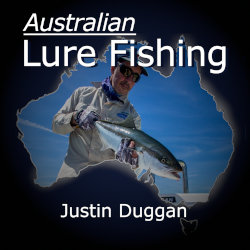

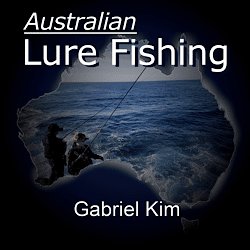
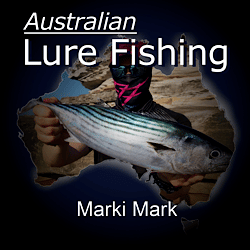
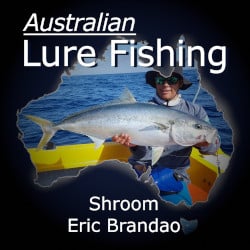
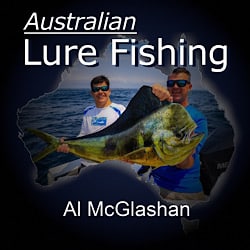
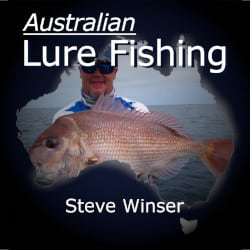
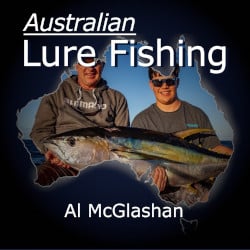
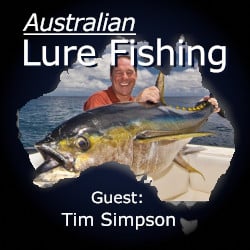
0 Comments